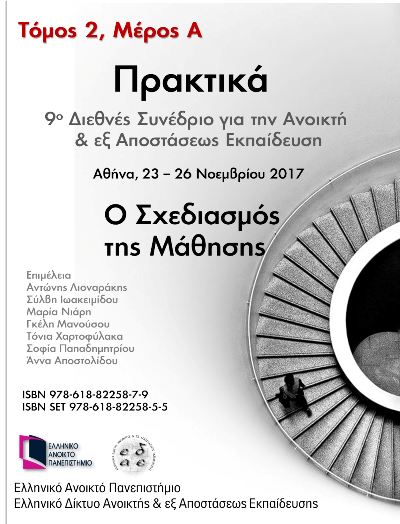Αξιοποίηση Συστημάτων Συστάσεων στο Μαθησιακό Σχεδιασμό

Περίληψη
Ο Μαθησιακός Σχεδιασμός – ΜΣ (Learning Design - LD) ως μεθοδολογία που επιτρέπει στους εκπαιδευτές να αποφασίζουν πιο εμπεριστατωμένα σχετικά με το πώς πρόκειται να σχεδιάσουν ακολουθίες μαθησιακών και διδακτικών δραστηριοτήτων, οι οποίες είναι παιδαγωγικά προσανατολισμένες και αξιοποιούν κατάλληλα τους αντίστοιχους εκπαιδευτικούς πόρους και τεχνολογίες έχει ήδη αναγνωριστεί ως σημαντικός παράγοντας επιτυχίας και βελτίωσης της ποιότητας της εκπαιδευτικής διαδικασίας. Η υποστήριξη των εκπαιδευτικών στο ρόλο τους ως σχεδιαστές της μάθησης αποτελεί ζητούμενο της ερευνητικής κοινότητας που αναπτύχθηκε γύρω από το πεδίο. Στο πλαίσιο αυτό, στο παρόν άρθρο διερευνώνται τα οφέλη που μπορεί να προκύψουν για την εκπαιδευτική κοινότητα από την ενσωμάτωση της τεχνολογίας παραγωγής συστάσεων σε εργαλεία ΜΣ. Για το σκοπό αυτό υλοποιήσαμε ένα Σύστημα Συστάσεων – ΣΣ (Recommender System – RS), το οποίο εφαρμόζει μια υβριδική στρατηγική για την παροχή συστάσεων προς τους εκπαιδευτικούς που αφορούν σε ολοκληρωμένα πρότυπα Σχεδίων Μαθημάτων – ΣΜ (Learning Designs - LDs). Ο εκπαιδευτικός μπορεί να επεξεργαστεί τα προτεινόμενα πρότυπα ώστε να δημιουργήσει το ΣΜ που ανταποκρίνεται καλύτερα στις δικές του ανάγκες και προτιμήσεις. Το προτεινόμενο σύστημα ενσωματώθηκε στο περιβάλλον του LAMS. Στη συνέχεια πραγματοποιήσαμε μια πιλοτική έρευνα ώστε να διαπιστώσουμε τις πεποιθήσεις των εκπαιδευτικών σχετικά με τα οφέλη που μπορεί να προκύψουν από τη χρήση του προτεινόμενου συστήματος. Οι λεπτομέρειες υλοποίησης του προτεινόμενου ΣΣ καθώς και τα αποτελέσματα της έρευνας παρουσιάζονται στην παρούσα εργασία.
Λεπτομέρειες άρθρου
- Ενότητα
- Άρθρα


